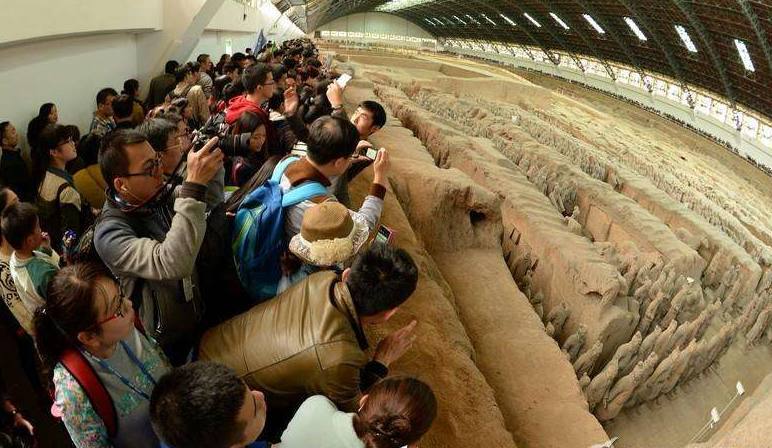
How Many People Built the Terracotta Army?
The Terracotta Army, a vast collection of life-sized terracotta sculptures depicting the armies of Qin Shi Huang, the first emperor of China, is one of the most impressive archaeological finds of all time. The sheer scale of the site raises a question that has fascinated historians and archaeologists alike: how many people did it take to create such a monumental work?
Ancient Accounts and Estimates
Our primary source of information regarding the construction of the Terracotta Army comes from the writings of the court historian Sima Qian, who lived during the subsequent Han dynasty. According to Sima Qian's Records of the Grand Historian, Qin Shi Huang initiated the construction of his mausoleum complex, including the Terracotta Army, shortly after his ascension to the throne in 246 BC. He records that over 700,000 laborers, conscripted from all corners of the newly unified China, were employed on this colossal project.
The Scope of the Project
To grasp the sheer manpower required, consider the scope of the undertaking. The Terracotta Army itself consists of an estimated 8,000 soldiers, 130 chariots with 520 horses, and 150 cavalry horses, each meticulously crafted with unique facial features, hairstyles, and armor. This massive force was only one part of a much larger mausoleum complex covering an area of nearly 22 square miles. The construction involved not just the shaping and firing of the terracotta figures but also the production of weapons, chariots, and other equipment, as well as the digging of vast pits and the construction of the elaborate underground palace complex.
Division of Labor and Specialization
The construction of the Terracotta Army was a highly organized and specialized operation. Archaeological evidence suggests a clear division of labor, with different workshops and groups of artisans specializing in specific tasks. Some workers would have been responsible for digging the clay, while others mixed it and shaped the figures using molds and hand tools. Specialized artisans would have then added the finer details like faces, hair, and clothing. Other groups would have focused on firing the figures in kilns, a complex and delicate process. Still, others would have been tasked with creating the weapons, chariots, and other equipment, showcasing a sophisticated understanding of metallurgy and craftsmanship.
Challenges and Hardships
The construction of the Terracotta Army, while a testament to human ingenuity and organization, would have been an arduous and often dangerous endeavor. The laborers, many of whom were conscripted peasants, would have faced harsh conditions, long hours, and the constant threat of disease or accidents. The sheer scale of the project and the logistical challenges involved in managing such a massive workforce are staggering to comprehend.
A Lasting Legacy
Despite the immense human cost, the Terracotta Army stands as a testament to the power and ambition of Qin Shi Huang and the skill and artistry of the ancient Chinese craftsmen who brought his vision to life. The fact that this army of clay soldiers has endured for over two millennia, silently guarding the tomb of the First Emperor, continues to captivate and inspire awe in all who behold it.
Q&A
Q: What evidence do we have for the number of laborers involved in building the Terracotta Army?
A: The primary source is the Records of the Grand Historian by Sima Qian, a Han dynasty historian. He mentions over 700,000 laborers being conscripted for the construction of Qin Shi Huang's mausoleum, of which the Terracotta Army is a part.
Q: How long did it take to build the Terracotta Army?
A: The construction of the mausoleum complex, including the Terracotta Army, began in 246 BC when Qin Shi Huang ascended the throne and continued for several decades. It was halted in 209 BC following uprisings after the emperor's death.
Q: What can we learn about ancient Chinese society from the Terracotta Army?
A: The Terracotta Army provides insights into the military organization, weaponry, artistry, and social structure of the Qin dynasty. The sheer scale of the project reflects the centralized power of the emperor and the sophisticated organization and labor management capabilities of the Qin state.